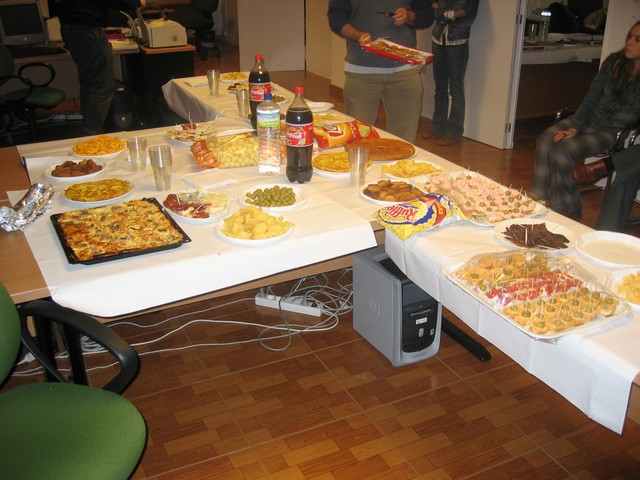Igalia Assembly… Or why I love working here…
As many of you know, I am a worker, and one of the initial partners of Igalia. This company is organized following an assembleary model. Every partner has the same rights and power of decission. And we want all workers to become partners in a medium term.
The main representation of this assembleary model is the Assembly itself. It’s a periodic meeting (one each two months) with all the partners discussing and taking the strategic choices of the company. We’ve held 43 assemblies in the history of Igalia, the first one in September 2001.
No bosses at all, just all of us being partners, with the same responsibility. This is fair, and one of the better things of being a member of Igalia team. And this makes everybody contribute with their best efforts and ideas.That’s one of the main reasons I love working here. And other main reason may be how much extraordinary and good people my partners are.
Guademy CFH (Call for Hacking!)
This is a very interesting event that will happen this year. It stands for Guadec + aKademy = Guademy destroy myths. As the event web states, Guademy is a meeting where GNOME and KDE developers share working sessions with other people interested in collaborating with both projects. It will be in March in A Coruña (Galicia – Spain), and is being organized by GPUL. Good idea and best wishes!
Snes emulators and touch screens
Last week I’ve been playing a bit with some emulators, in order to try to get one of them running in Maemo. The one I’ve been testing more deeply is Snes9x. It compiles without too much problems, and it should be easy to make it run a confortable UI with some hildon work.
But there’s a problem. Nokia N800 and 770 haven’t got too many hardware buttons, and a good Super NES emulator should get 6 fire buttons plus start and select buttons. My idea would be add support for showing buttons in the screen replacing some hard buttons in the screen, in order to use the touch screen for providing 4 fire buttons. Unfortunately, I suppose the main drawback of this idea is that AFAIK the touchscreen of these devices can’t handle more than one “touch” simultaneously :(. Any idea about this?
The other problem will probably be hardware performance, but I didn’t test the emulator in the device yet.
